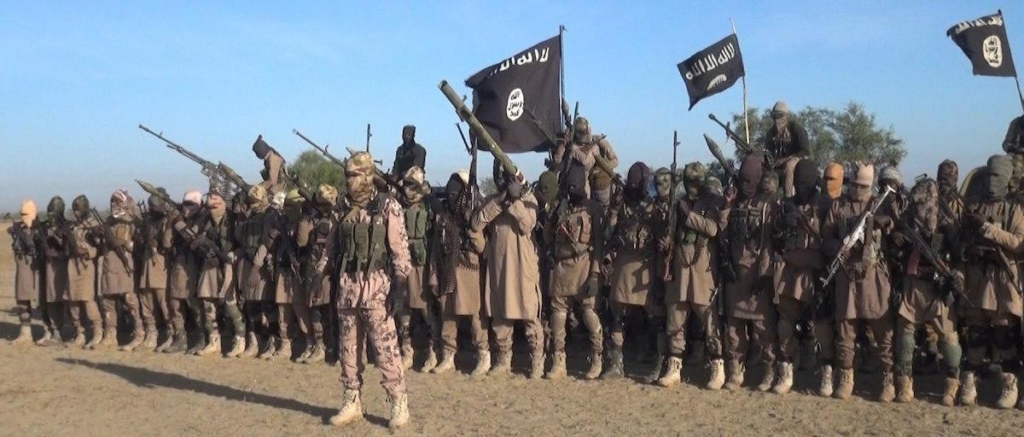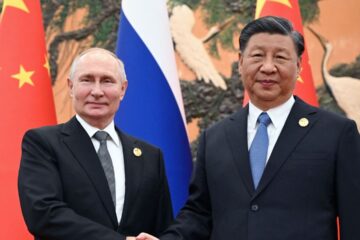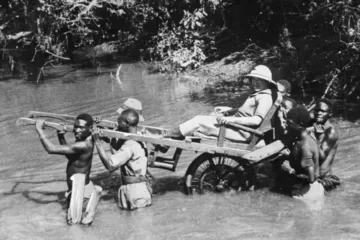NIGERIA and Boko-Haram
What you want to understand: 🤔
- How did Boko Haram get control of Lake Chad?
- How do the Islamic State and Boko Haram differ?
- What is the connection between criminality and terrorism?
- What are the shortcomings of Nigerian counter-terrorist efforts?
I. Some elements of context
A. The Biafra War (1967-1970)
In 1960, Nigeria obtained its independence from Great Britian.
In 1967, Christians from the Ibo community in Biafra (South-East) considered that Muslims in power in Lagos discriminated against them and decided to secede from the rest of the country. It is also worth noting that the Ibo owned most of the Nigeria’s oil resources. The Biafra war lasted until 1970 and resulted in the death of around 1 million people, most of them were civilians who died from starvation.
B. Modern Nigeria
During the next 30 years, the country experienced coup after coup before becoming a democracy in 1999. Nigeria is Africa’s fastest growing economy between 2000 and 2010 with an annual GDP growth average of 9%.

There are various factors that still hinder the development of Nigeria such as:
- the development gap between the North (Muslim) and the South (Christian) in favour of the latter
- fighting in the centre of Nigeria between Muslim cattle raisers (Fula) and Christian farmers (Berom)
- criminality in North-West Nigeria
- terrorism in North-East Nigeria
- the Ibo still want independence and tensions are still important with State forces
- corruption
- piracy in the Gulf of Guinea where there are off-shore oil fields

II. The Nigerian armed forces
The Nigerian army is considered in many respects as the most powerful of Western Africa despite its logistical, equipment and corruption problems. One of its assets is its air power, which proves efficient against asymmetric threats, even though blunders are common.
Nonetheless, Nigeria’s armed forces have to cope with logistical shortcomings, problems of communication between air and land armies, poor intelligence capacities and corruption issues.
II. Boko Haram
A. Chronology
2002:
- Creation of Boko Haram in the Borno State (North-East) by Mohammed Yusuf who promoted the application of the Shari’ah for the organisation of society.
- He took inspiration from the Sokoto Caliphate of the 19th century.
- In the Hausa language, “Boko Haram” means “Western education is a sin”
2009:
- Boko Haram launched an armed insurrection
- Mohammed Yusuf got arrested and executed by the Nigerian army
- Abubakar Shekau took over and as a consequence Boko Haram became more radical and violent

2011-2012:
- New Boko Haram insurrection
- Boko Haram’s targets:
- State armed forces
- Christians
- Mosques that didn’t share the same interpretation of the Quran
- A faction named Ansaru split and joined al Qaeda (it is considered inactive since 2015)
2013:
- State of emergency declared and the Nigerian army bombed villages and killed many suspected to help Boko Haram, which reinforced the attractiveness of the group for local populations that felt abandoned by the State
- As Boko Haram lost territory, it increased the number of suicide attacks
2014:
- 2014-2015 can be considered as the peak of Boko Haram’s insurgency
- April 2014: abduction of 276 schoolgirls in Chibok
- The Nigerian army pushed Boko Haram towards Lake Chad
- A faction split from the group and became the Islamic State West Africa Province (ISWAP)
2015-2016:
- Boko Haram’s operational capacities were severely damaged by an international coalition (Force Multinationale Mixte) comprising troops from Cameroun, Niger, Nigeria, Chad and Benin.
- But the surroundings of Lake Chad remained under Boko Haram’s control because of the environment that prevents the use of vehicles and heavy weapons
2017-2018:
- Boko Haram controls fishing activities on Lake Chad and kills whoever might oppose its ruling
- The terrorist group stirs up intercommunity tensions between Hausa and Boudouma, in favour of the latter
- State forces try to close fish markets that benefit Boko Haram’s activities but local populations have to abandon their villages, which are then occupied by the terrorists

2021:
- Death of Abubakar Shekau in May 2021 in a fight against ISWAP
- Eventually, Abu Umaimata took over Boko Haram
B. ISWAP
The 3 main factors that can explain ISWAP‘s establishment and growth in the Lake Chad region are:
- Playing on ethnic rivalries between Kanouri, Kanembou and Boudouma. It is worth noting that the large majority of Boko Haram fighters are Kanouri.
- Using cross-border traffics between Nigeria, Niger, Chad and Cameroun
- Unlike Boko Haram that indiscriminately kills, ISWAP strove to provide support and services to civilians to increase its popularity (authorisation to borrow money, vaccination campaigns…)
ISWAP is Daesh‘s most powerful organisation with approximately 3,000 fighters. It is also the most visible on social media, which significantly contributes to its recruitment strategy.

Even though there is a rivalry between ISWAP and Boko Haram, Abubakar Shekau the leader of Boko Haram since 2009 claims to belong to the Islamic State group, even though the latter never approved it. Nonetheless, Boko Haram uses the same visual identity as the Islamic State group.
III. Connections with criminal networks in the North-West of Nigeria
Criminality in the North-West of the country is as much a priority for Abuja as the terrorist threat is in the North-East of the country. As a matter of fact, criminal gangs and terrorist groups interact with each other via trade and traffic routes.
However, criminals don’t see any advantages in forging alliances with terrorists as it would bring them too much into the spotlight. That’s why ISWAP has difficulties expanding its activities to North-Western Nigeria and in the rest of the country, even if it has already set up various dormant cells.
IV. Counter-terrorist efforts and their shortcomings
A. The Nigerian army and its partners
One of the main hindrances of Nigeria’s counter-terrorist efforts is the absence of harmonisation of legislations with neighbouring countries when it comes to the cross-border pursuit of criminals. Besides, due to mistrust and poor intelligence sharing, African States lack coordination in their counter-terrorist operations.
B. Civilian Joint Task Force – CJTF

This local and informal task force was created in 2012 as a support for Nigerian armed forces in their fight against Boko Haram. This auxiliary force, which is now institutionalised, is managed by the Nigerian government that is in charge of paying wages.
However, given their low revenues, CJTF members often commit abuses against civilians to get money. They are also responsible for interference into local politics as well as exactions against local populations, which benefits the recruitment strategy of jihadist terrorist groups.



1 Comment
TRANSITIONAL JUSTICE and TERRORISM in Africa and the Middle East – geopol-trotters · 17 May 2025 at 1:07 pm
[…] Likewise, in Chad, the death penalty was reintroduced in 2015 following attacks perpetrated by Boko Haram in […]